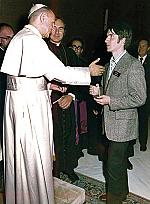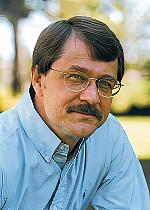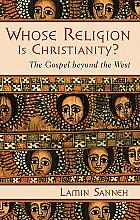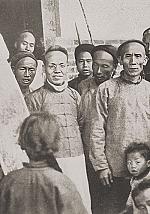Century of the Holy Spirit
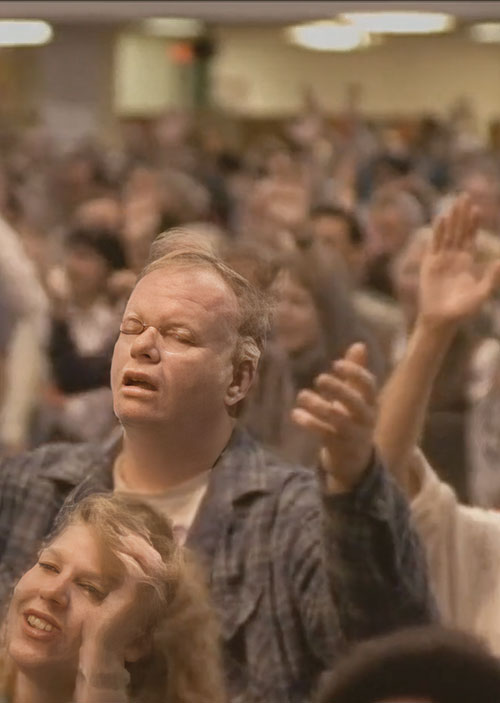
[Footage from The Toronto Blessing—[CC BY-NC 4.0] Christ for All Nations]
In 1897 a little-known Italian nun named Sister Elena Guerra (1835–1914) had the audacity to write a letter to Pope Leo XIII (1810–1903) asking him to pray a novena (a nine-day prayer) to the Holy Spirit between the feasts of Ascension and Pentecost. Pope Leo not only responded to her letter, he issued an encyclical—On the Holy Spirit—summoning the Catholic Church to permanently and universally pray a novena in preparation for the feast of Pentecost. On January 1, 1901, Pope Leo opened the windows of the Vatican and sang “Veni Creator Spiritus,” invoking the Holy Spirit’s presence upon the new century.
On the same day, on the other side of the globe, a small Protestant Bible school in Topeka, Kansas, prayed for and experienced an outpouring of the Spirit like that which the apostles received in the book of Acts. What happened in that Bible school would profoundly affect the entire church. Pope Leo’s invocation was coming true. The 1900s would be remembered by many as the Century of the Holy Spirit.
Three main revival streams emerged during the twentieth century, along with a few related streams we might call tributaries. The first was the traditional Pentecostal movement birthed from the Azusa Street Revival (see pp. 18–22), which was followed by the rise of healing evangelists. The second was the midcentury Charismatic movement, which had two expressions: one in traditional evangelical churches and the second in the Roman Catholic Church. The third stream, or “Third Wave,” as it is often called, flowed through John Wimber (1934–1997) and exploded via the Toronto outpouring beginning in 1994 and the Brownsville Revival of 1995 in Pensacola, Florida.
The First Stream: Pentecostalism
Traditional Pentecostalism flowed out of the Wesleyan Holiness movement of the 1800s. Charles Parham, a Methodist Holiness preacher in Topeka, became known as the theological father of Pentecostalism when students in his Bible school, who were studying the Holy Spirit, had an experience similar to what they were reading about in Acts 2. They were baptized with the Holy Spirit and spoke in tongues. From this experience Parham formulated a doctrine that tongues-speaking was the initial physical “evidence” of Holy Spirit baptism, which became the defining theological feature of traditional Pentecostalism (and it still separates this movement from later groups with broader understandings of Spirit baptism).
William Seymour, leader of the Azusa Street Revival, had studied under Parham and wholeheartedly embraced this new doctrine. Starting in a modest building in Los Angeles, the revival Seymour led spread across the nation and around the world, reaching multitudes across the socio-economic and racial spectrums, including missionaries and pastors.
Healing Evangelists: A Pentecostal Tributary
By midcentury the nation had been through two world wars and the Great Depression. The heart of the country needed healing and a fresh touch from God. Into this spiritually dry milieu came the post-WWII healing evangelists. William Branham (1909–1965) was the forerunner, attracting crowds of thousands as reports of miraculous healings spread. Oral Roberts was the second on the scene. With his big tent seating several thousand people, he spread the good news across the nation that “God is a good God” and “Healing can be received now.” Roberts was the first to take healing crusades into people’s living rooms through television, where they could see, in the privacy of their homes, the miracle-working, healing power of God. Other healing evangelists followed Branham and Roberts, including Jack Coe (1918–1956), A. A. Allen (1911–1970), Tommy Lee “T. L.” Osborn and Daisy Washburn Osborn (1924–1995), Kathryn Kuhlman, and many more (see pp. 28–31).
The Second Stream: The Charismatic Movement
In April 1960 at a 9:00 a.m. Sunday service, Dennis Bennett (1917–1991), an Episcopal priest in Van Nuys, California, shocked his parish by telling them he had received the baptism in the Holy Spirit and had spoken in tongues. The congregation was outraged at this news, and by the third service that Sunday morning, the church board demanded his resignation. Bennett relocated to a small parish in Seattle, where revival soon broke out. Time magazine released an article about the happenings, saying the Holy Spirit was not just moving among the uninhibited Pentecostals but among the Episcopalians, “God’s frozen people.” This marked the start of a new stream of the Spirit’s activity, with a new breed of empowered believers choosing to stay within their denominations and seek renewal among their people rather than join the Pentecostals. Because of their belief in the charisms (gifts) of the Spirit seen in 1 Corinthians 12:8–10, they soon were identified as Charismatics.
Catholic Charismatics: A Parallel Stream
Pope John XXIII (1881–1963) opened the Second Vatican Council in 1962, praying for a “New Pentecost” to come upon the entire church. The Catholic stream of the Charismatic revival originated with a weekend retreat of 4 faculty members and 30 Catholic students from Duquesne University on February 18, 1967. Fueled with hunger after reading David Wilkerson’s (1931–2011) book The Cross and the Switchblade, the all-Catholic group met to seek the Lord. On that Saturday night, they had planned to have a birthday party but instead were drawn upstairs to the chapel where the tangible presence of the Holy Spirit encountered them. Those present began to speak in tongues; some laughed, some cried, and they were all filled with joy and an indescribable love of God. News of the outpouring quickly spread to Notre Dame University, where the Catholic Charismatic movement was launched and began spreading around the world (see p. 52). By the end of the twentieth century, the Charismatic movement among Catholics had penetrated 233 nations and impacted over 10 percent of the Catholic body, representing more than 100 million people.
The Third Wave
In 1982 another revival stream erupted, eventually identified as the Third Wave movement. It started with John Wimber, the founder of the Vineyard movement, and his famous class at Fuller Theological Seminary: “Signs, Wonders, and Church Growth.” As a church growth consultant, Wimber had realized that the fastest-growing churches in America and around the world were those experiencing healing, deliverance, and other spiritual gifts that resembled the ministry of Jesus. In the class Wimber taught the ministry of Jesus from the Gospels, how the Holy Spirit had moved throughout Christian history, and the impact of the charisms (spiritual gifts) on the church today. At the close of the class, in an optional, hands-on training period, Wimber taught the students how to pray effectively for the sick. The class caused such a stir that Christian Life Magazine dedicated an entire issue to it. By the third year the course was offered, it broke all of Fuller’s enrollment records.
Toronto and Brownsville
During the latter part of the twentieth century, two revivals emerged within one year: the Toronto Blessing in Canada and the Brownsville Revival in Pensacola, Florida. Both of these events were woven from strands of God’s leading that stretched around the world.
Randy Clark (b. 1952), a St. Louis pastor on a spiritual quest, heard about a move of the Spirit in the ministry of Rodney Howard-Browne (b. 1961), so he attended a service in Tulsa, Oklahoma, led by that revivalist. There the Holy Spirit powerfully affected Clark, who shared his testimony with his congregation back in St. Louis and saw the Spirit affecting them in the same way. Then John and Carol Arnott, Vineyard pastors in Toronto, heard Clark’s testimony and invited him to share his story at their church. Clark was hesitant but he remembered Howard-Browne saying: “if you want to see revival, go north in the winter.” So he spoke to the small Vineyard congregation in Toronto, at the end of an airport runway, and the revival later known as the “Father’s Blessing” began. The meetings that started on January 20, 1994, were supposed to last only a few days but kept going for years.
Four months after that revival started, Eleanor Mumford, a Vineyard leader from England, attended the meeting in Toronto and carried the revival fire back home. Mumford later prayed for Nicky Gumbel, curate of the Holy Trinity Brompton Anglican Church, who prayed for that church’s vicar, Sandy Millar, and revival broke out in the Anglican Church in the United Kingdom. The London Times magazine reported that while other Anglican churches had “pathetically tiny flocks of Londoners” attending their Sunday night services, Holy Trinity Brompton had people lining up 90 minutes before services to get into the standing-room-only, 1,500-seat sanctuary.
Steve Hill and his wife, Jerri, had served as missionaries in Argentina and were desperate for a fresh touch from God. Hearing about the Anglican revival, Steve Hill visited Holy Trinity Brompton and asked for prayer. Millar prayed a simple prayer: “Touch him, Jesus. Bless him, Lord.” The strength drained from Hill’s body, and he fell to the floor. Millar knelt beside Hill and whispered, “You don’t have to do anything. He loves you. Rest in his love.”
On Father’s Day, June 1995, Hill recounted this story at the Brownsville Assemblies of God Church in Pensacola, Florida. Pastor John Kilpatrick and his congregation had been praying for two years for a fresh outpouring of the Holy Spirit. Because it was Father’s Day, Kilpatrick did not expect anything to happen when Hill spoke, but at the altar call, a thousand hungry people, half the congregation, came forward. Many were baptized in the Holy Spirit, spoke in tongues, were filled with joy, and fell to the floor overcome by the Spirit. Kilpatrick himself felt pressed to the floor and could not get up until 4:00 p.m. The revival, now known as the Brownsville Revival, was born, and nightly services began.
Global Harvest
These streams of revival from Toronto and Brownsville touched people around the world. Planes and busloads of people converged on these two revival centers. People stood in long lines for hours, hoping to get into the nightly meetings and to receive a touch from God. The revival at Brownsville ran from 1995 to 2000, with over three million people visiting and more than 200,000 salvations reported. A vast army of Spirit-empowered believers took their experience back to their home churches in America and around the world.
All genuine revivals create controversy. This was especially true of the Toronto Blessing, as observers objected to some of the behaviors elicited, such as barking, shaking, and uncontrollable laughing or weeping. Still this revival had a long-lasting impact, launching many effective ministries, including Randy Clark’s work in Brazil. He also founded Global Awakening Theological Seminary to preserve the revival’s fruit and to train and equip a new generation of Spirit-empowered believers for a global harvest. Heidi and Roland Baker, missionaries in Mozambique, saw tremendous fruit after being overwhelmed by the power of God at the Toronto revival. Leif Hetland, also touched by this revival stream, has led over a million Muslims to the Christian faith.
The combined revival streams of Pentecostalism, the Charismatics, and the Third Wave involved over a half billion people at the close of the twentieth century. This Spirit-empowered force in Christendom is second in size only to the Roman Catholic Church. The movement transcends denominational lines, has diverse theological convictions, and finds expression around the globe.
Sister Elena’s prayers were answered. The twentieth century went down in history as the Century of the Holy Spirit. CH
By Connie Dawson
[Christian History originally published this article in Christian History Issue #153 in 2024]
Connie Dawson is a professor of church and renewal history at Global Awakening Theological Seminary and author of the book John Wimber: His Life and Ministry.Next articles
The moving cloud of God’s presence
How do Christians align with God in the work of revival?
Recommended resources: Global outpouring
Learn more about the revivals and spiritual awakenings of the last century or two in these resources recommended by the CH team.
The editors and contributorsSupport us
Christian History Institute (CHI) is a non-profit Pennsylvania corporation founded in 1982. Your donations support the continuation of this ministry
Donate



